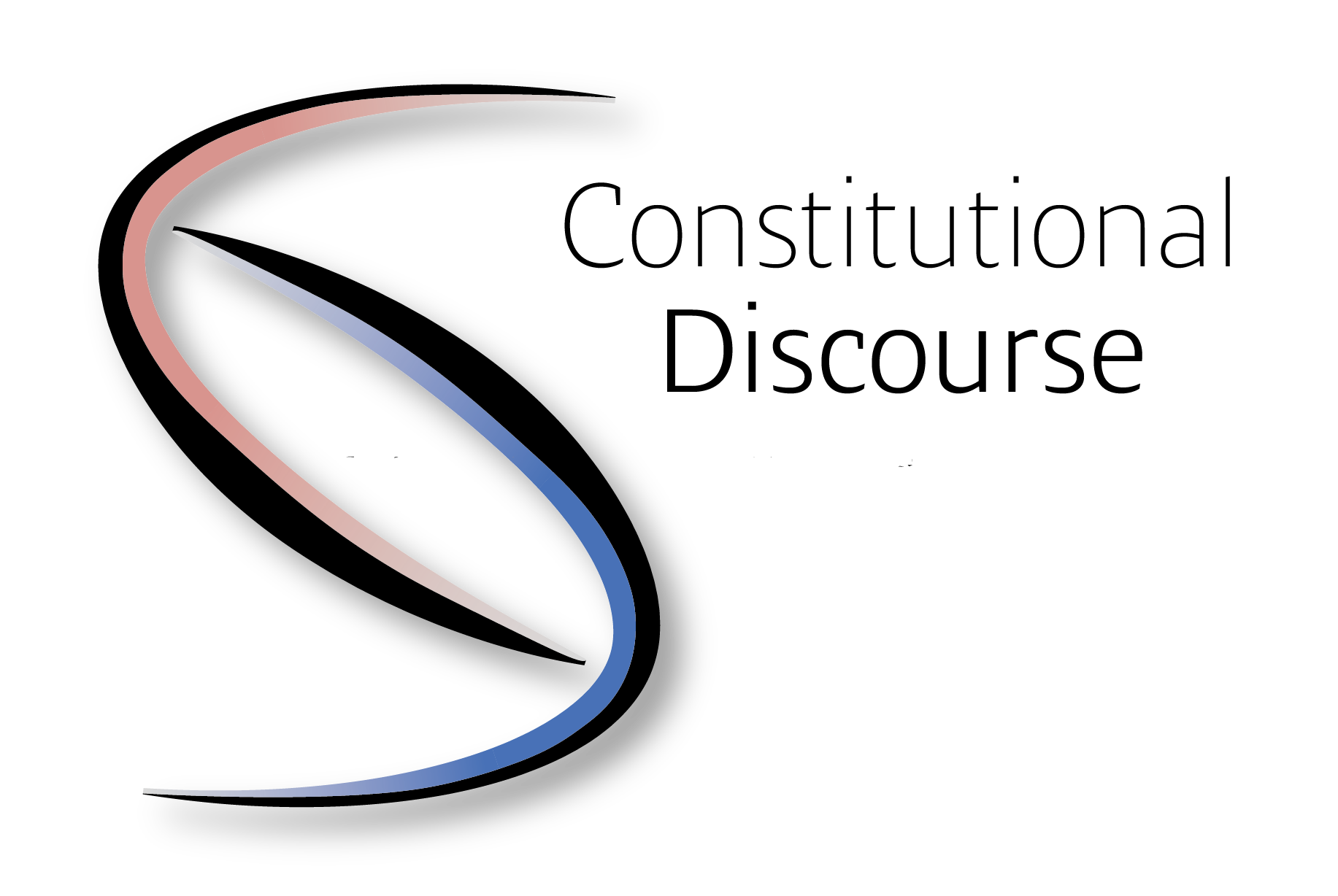Soma BÁCSFALVI: Reviewing the Most Powerful Rule(s) of Law in Europe and Their Challenges
During the last decade the debate about the “real rule of law” dominated European constitutional law and politics, although the processes got faster in the last – let’s say six – years, especially after the European Union (EU) created several rule of law review processes, such as the rule of law mechanism or the conditional regulation. The actuality of this post is that a couple of weeks ago the 2023 Rule of law report was published, which is published every year due to the regulation of the rule of law mechanism. In this report, the European Commission is observing every member state according to different aspects. These aspects are the judicial system of the member states, the media pluralism and the freedom of the press, the anti-corruption framework, and other institutional issues linked to the system of checks and balances.
Nowadays One can observe the presence of two major “citizen” groups – it is especially noticeable in Hungary –, on the one side the so-called “pro-EU camp”, which thinks that the rule of law is the very same across Europe, at least in its dogmatic background, and so they absolutely agree with the present functioning of the EU and its restrictions against some member states. On the other side is the “critical camp”, which thinks that almost everything Brussels does is harmful and burdensome for the Member States (and also the EU), and in most cases, they are the targets (not accidentally) of those rule of law review processes which I mentioned above.
The EU’s above mentioned rule of law procedures clearly demonstrate the conflict that has arisen regarding the interpretation and the development of the rule of law in Hungary and Western Europe, which has led to a situation summarized aptly by Nóra Chronowski in her monograph Constitutionalism in Three Dimensions. Due to the changes the Hungarian legal system went through and due to these debates about the EU’s and the Member States’ majority Rule of Law perception, the Hungarian constitutional system got to a point where it has been systematically and critically analyzed and labeled using a variety of indicators such as András Jakab’s hybrid regime, Martin Belov’s populist constitutionalism or David Lendau’s abusive constitutionalism.
But this time, to understand what Hungary and the EU went through in the last couple of years, it has to be pointed out that there really are differences in the theories of rule of law between the current and former member states. By denying this statement, we would only increase the division in our societies, which could lead us to the collapse of one of the most important – both economic and political – conglomerate, the European Union. Although there are other theories – obviously – such as the French État de Droit – which I will mention below – or the Italian Stato di Diritto or the Slovenian Pravna Država, there is not enough space in a blog post to cover them all.
In the following, the “most powerful theories” of rule of law will be presented: the German Rechtsstaat and the Anglo-Saxon Rule of Law, what were lead us to the founding of the union (among others). It has to be noted, that in the last couple of years, the debate about rule of law was not between the different Western European countries but with those Central and Eastern European ones, whose political, constitutional, historical, and democratic backgrounds (which is also connected with their societies) has lagged behind in this progression. Not least because these countries (like Hungary, Poland and so on) were functioning under a dictatorship, basically without any type of sovereignty, so mostly every country in this post-socialist region only been living in a so-called “democracy” for around thirty years, during which time the scientific community and the citizens themselves have had to understand and learn the theoretical and practical operation of this new form of state.
Historical background:
Following two of the most prominent figures in Christian political philosophy, St Thomas Aquinas and St Augustine, the science of philosophy has been dominated by the idea of natural law, which argues that man-made law (ius humanum) must be developed in such a way that there is a superior law, which is none other than divine law (ius divinum). However, over the centuries, this notion has been increasingly superseded, which resulted that the laws created by the states had to provide their own answers to questions that were previously settled in a different way. To solve this problem, three main solutions were created, which are still relevant today: the English rule of law, the German Rechtsstaat (the basis of our Hungarian ideal of the rule of law), and the French constitutionalism. The main theory of the French Constitution is not the rule of law, but constitutionalism. Although, there is the French view of the rule of law (État de Droit) that is obviously connected with constitutionalism and it prevails indirectly through it, but constitutionalism is not another view of the same fundamentum but has a separate value and purpose.
These three solutions have, nevertheless, emerged within two families of law – at least if we take René David’s classification theory as a starting point. In his opinion, we can distinguish three basic families of law in jurisprudence. First, the Romano-Germanic family of law, which includes the French and German legal systems, since they developed on the basis of Roman law. As another family, he identified the common law family, which, although it developed in a Christian context, operated with a radically different solution than its Romano-Germanic cousins. As a third family of law, he identified the so-called socialist family of law, while a fourth group was defined as legal systems that could not be grouped into a single family. In the following, I will briefly examine the different theories and the resulting contrasts between the two families of law that are still relevant today, namely Roman-Germanic and common law.
The Anglo-Saxon Rule of Law
The Anglo-Saxon principle of rule of law has its roots in the aforementioned common law legal system and its first appearance is dated around Charles Stuart I (1600-1649), but only began to take shape in the specific English socio-political context of the 17th and 18th centuries.
In the common law system of precedent, the written law is also primary, but in the absence of codified law, the case of the assertion of subjective entitlement and the decisions of the judiciary, where the reasonableness of the previous judicial decision can be invoked, based on judicial rationality, are the primary decisions. Sir Edward Coke believed that this legal reasonableness ensures the primacy of the common law judge over the exercise of political power. Even within this legal system, however, there are conflicts of interest, since it is not insignificant that the principle of the primacy of the common law may conflict with the idea of the supremacy of the British Parliament.
In the Anglo-Saxon (more closely British) common law system, contrary to Montesquieu’s theories, the different branches and functions of power were intertwined to a rather large extent. For example, the monarch was theoretically part of the legislature because of the King/Queen in Parliament principle, the Lord Chancellor – the President of the Second Chamber – was also the head of the supreme court and a member of the government. For a long time, until 2010, the House of Lords performed the functions of the Supreme Court, and the intertwining of the executive and the legislature is shown by the fact that, in Westminster-style British parliamentarism, members of the Cabinet are also members of the House of Commons.
The common law interpretation of the rule of law is that in such a system, i.e. where Parliament and Government are so closely intertwined and even interdependent, the independent courts have a wide range of law-making and adjudicative powers which ensure the supremacy of law – or the rule of law – over any governmental arbitrary power. Another important point is that the United Kingdom does not have a chartered constitution but a historical (uncodified) one, which consists of relevant judgments of the courts, declarations of rights and statutes (Acts of Parliament), enforced by a specific legal system and the rule of law.
The relevant theory of the anglo-saxon rule of law perception, in Albert von Dicey’s treatise “Introduction to the Study of the Constitution”, published in the United States in 1885, also focused on the current (then) interpretation of the Rule of Law and which states can meet this set of criteria. Dicey concludes that the most important parts of the Rule of Law are the absolute supremacy of the law, i.e. that all subjects of law – including the lawmaker itself – are subject to it, and that individuals can enjoy the fundamental rights of the state equally, guaranteed by the state constitution.
This is in harmony with another anglo-saxon rule of law theoretical Tom Bingham’s thoughts. He defined the central premise of the rule of law as: “all persons and authorities within the state, whether public or private, should be bound by and entitled to the benefit of laws publicly and prospectively promulgated and publicly administered in the courts.”
The German Rechtsstaat
The German Rechtsstaat appeared in public law somewhat later, in the 19th century. In its form, it is a set of fundamentally different theories, to such an extent that a complete listing of the most important works on the rechtsstaat would be a considerable challenge. However, the common starting point of these different theories is that they contrast the rule of law with the police state (Polizeistaat), which is based on the autocratic rule of the individual.
The “founding fathers” of the rechtsstaat principle include significant legal scholars such as Robert von Mohl, Friedrich Julius Stahl and Rudolf von Gneist. The German doctrine of the rule of law does not see institutional solutions as the appropriate means, i.e. it does not see the realisation of the rule of law in the division of power and a specific form of government. As András Zs. Varga points out: Mohl neglects to link the rule of law to formalism. According to Robert von Mohl, the framework for the exercise of sovereign power is provided by the state, the means are provided by law, and the primary task of the state is to enforce its legal order, which means that the exercise of state power is only possible by legal means. Based on this conception, the concept of the rechtsstaat is normative, while the relationship between the individual and the state – i.e. democratic legitimation – is at its core, and the state must provide its citizens with guaranteed freedoms. Von Mohl attempts to show by means of a non-exhaustive list what rights citizens are entitled to in a state governed by law, but in the end – as Krisztián Szaniszló rightly points out – it can only be interpreted as an exemplary list. He defines such substantive rights as, for example, personal freedoms, freedom of speech (i.e. freedom to communicate one’s thoughts), freedom of association and religion, or equality before the law, but in his view the requirement of proportionality is also an important part of the rule of law doctrine. The Member States of the Federal Republic of Germany, the Executive and the Judiciary must work in harmony.
Based on these, as Fruzsina Gárdos-Orosz and Zoltán Szente pointed out, “In Germany in the 19th century, the aim was primarily to strengthen the formal rule of law, to build up the legal basis of public power. In Great Britain and France, the concept of the substantive rule of law was more prominent. This meant that fundamental rights had to be guaranteed by a state based on the principle of separation of powers.”
Challenges of Rule of Law
These concepts paved the way for a new concept of the rule of law (can be interpreted like they paved the way for a new level of rule of law), the European Union’s own theory, which initially incorporated it into its own values (Article 2 of the Treaty on European Union) and later created a normative definition for it (Regulation 2020/2092). Ongoing discussions about the EU’s own view on rule of law include whether the EU is capable to have an own view, since it is not a country. There are also many critics about the way how the EU executes this principle. The separate rule of law processes the EU created after one another can be liable to infringe the principle of legal certainty. Unfortunately, the issue of defining rule of law became more complex than only a legal problem itself. During the last ten years, the concept of rule of law expanded from the field of law to a field mixed with law and politics, which not an unknown phenomenon in history, but it could never really helped the case itself.
Soma BÁCSFALVI is a Msc student of law at the Faculty of Law and Political Sciences of the University of Szeged, Hungary, and a scholarship student of the Aurum Foundation. As a former intern with the presidential cabinet of the Hungarian Constitutional Court, his research focuses on the interconnections of national constitutional law and European public law, in particular on the rule of law and its manifestations in the European Union.








